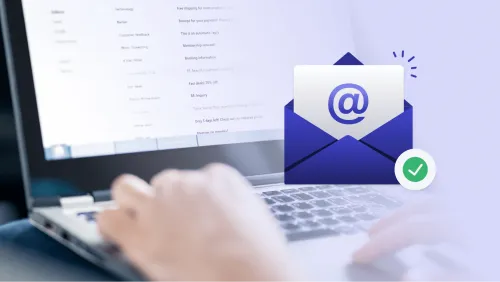In today's digital age, email communication is a cornerstone of personal and professional interactions. Whether you're sending a critical business proposal or a heartfelt message to a loved one, ensuring that your email reaches its intended recipient is paramount. Email validation plays a pivotal role in this process by verifying the authenticity and accuracy of email addresses. In this comprehensive guide, we'll embark on a journey to explore various email validation types, their importance, and how they can contribute to data quality and user engagement.
Why Email Validation Matters
Before we dive into the different types of email validation, let's understand why it's crucial:
Data Accuracy: Valid email addresses ensure that your database is free from typos, fake, or inactive addresses, improving overall data quality.
User Engagement: Sending emails to verified addresses enhances user engagement as your messages reach the right recipients.
Reduced Bounce Rates: Email validation reduces bounce rates, preventing your messages from being marked as spam.
Types of Email Validation
There are several email validation methods, each with its unique approach to verifying email addresses:
Syntax Validation: Ensures that an email address follows the correct format, including "@" and domain components.
Domain Validation: Checks if the domain of the email address exists and is configured to receive emails.
MX Record Verification: Verifies the presence of Mail Exchange (MX) records for the email domain.
SMTP Validation: Connects to the email server to check if the mailbox exists and is accessible.
Disposable Email Detection: Identifies and rejects disposable or temporary email addresses often used for spam.
Role-Based Email Detection: Flags email addresses associated with roles (e.g., [email protected]) rather than individuals.
DNS Validation: Uses Domain Name System (DNS) queries to validate the email domain's existence.
Best Practices for Email Validation
Implementing email validation effectively requires adhering to best practices, such as:
Real-Time Validation: Validate email addresses in real-time during user registration or data entry.
Regular Database Cleaning: Periodically validate and clean your email database to maintain data quality.
Custom Validation Rules: Tailor validation rules to match your application's specific needs.
Applications of Email Validation
Email validation finds applications in various industries and scenarios:
E-commerce: Ensure accurate order confirmations and shipping notifications.
Marketing: Improve the deliverability of marketing campaigns.
Finance: Verify email addresses for transactional communications.
Social Networks: Enhance user engagement through validated email notifications.
Commonly Asked Questions (FAQs)
1. Are all email validation methods equally important?
No, the significance of validation methods depends on your application's needs. Syntax validation is a fundamental starting point, but more robust methods like SMTP validation enhance accuracy.
2. How often should I validate my email database?
Regular validation is essential. The frequency depends on your data volume, but quarterly validation is a good starting point.
3. Can email validation prevent all spam?
While it significantly reduces spam, it cannot guarantee 100% spam prevention, as spammers continually adapt.
In conclusion, understanding and implementing email validation types is critical for maintaining data quality, enhancing user engagement, and ensuring the success of your email-based communications. By following best practices and choosing the appropriate validation methods for your application, you'll be well-equipped to navigate the dynamic landscape of email validation in the digital era.



